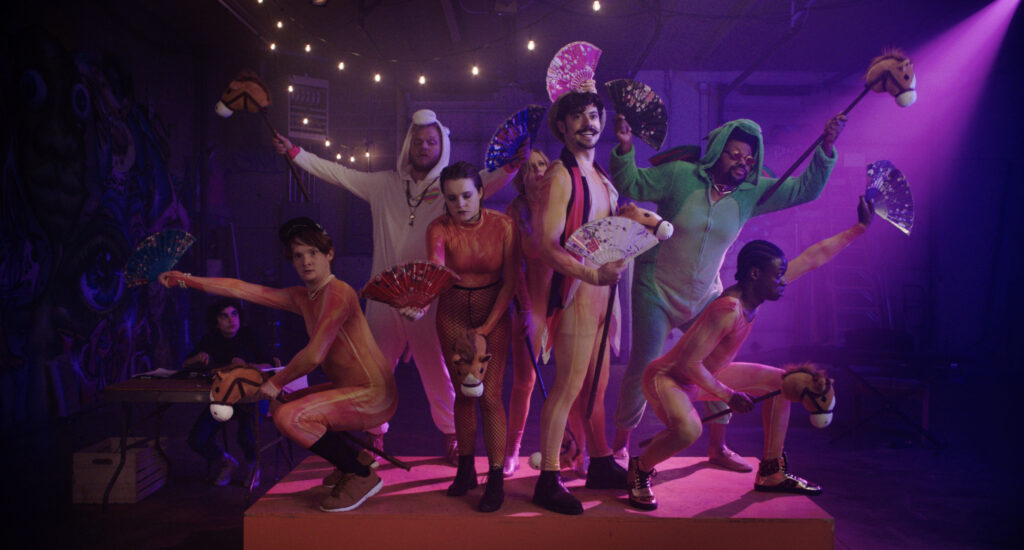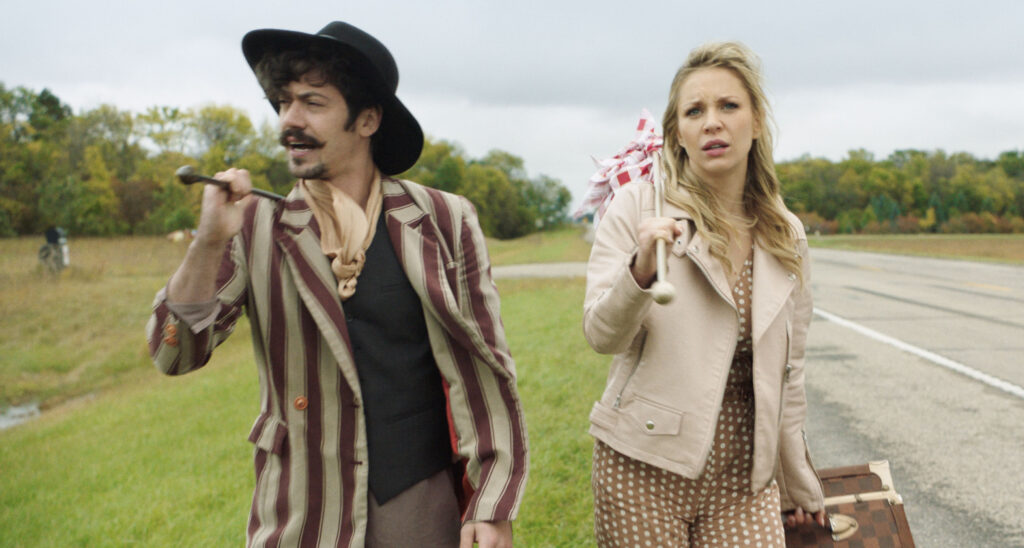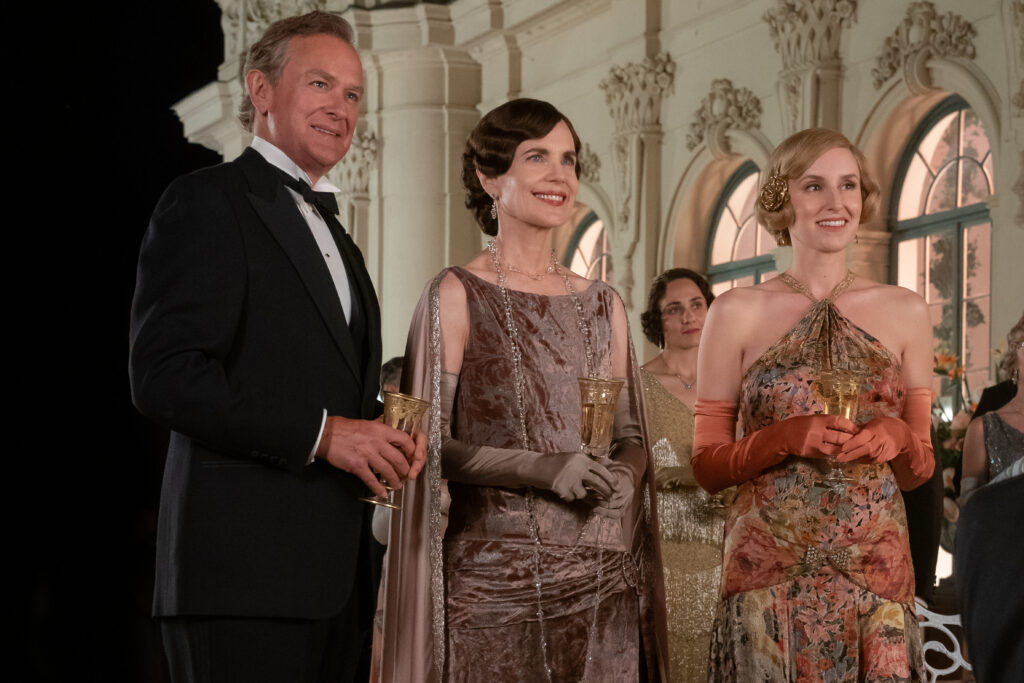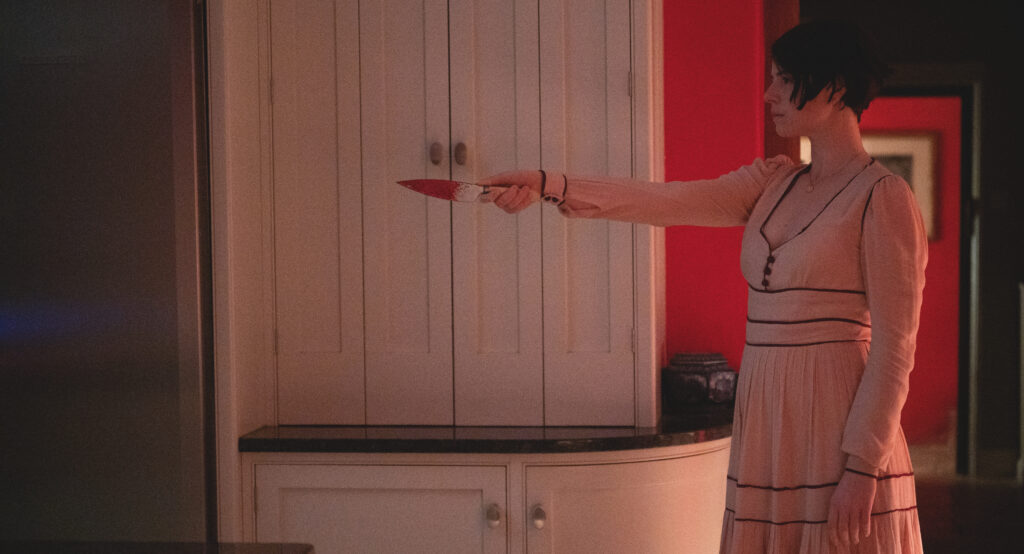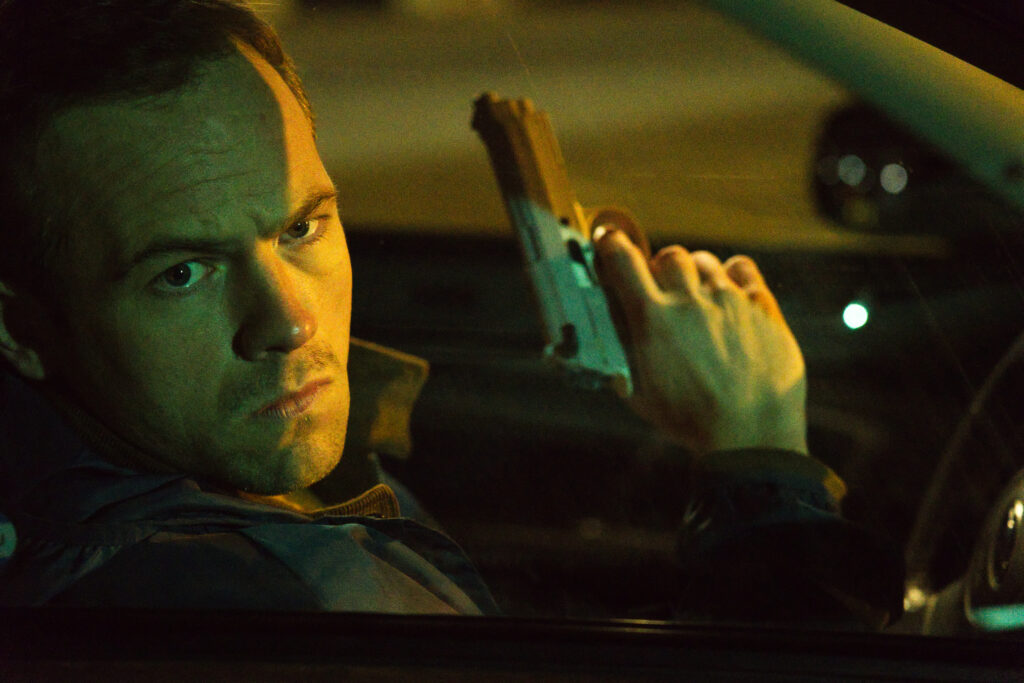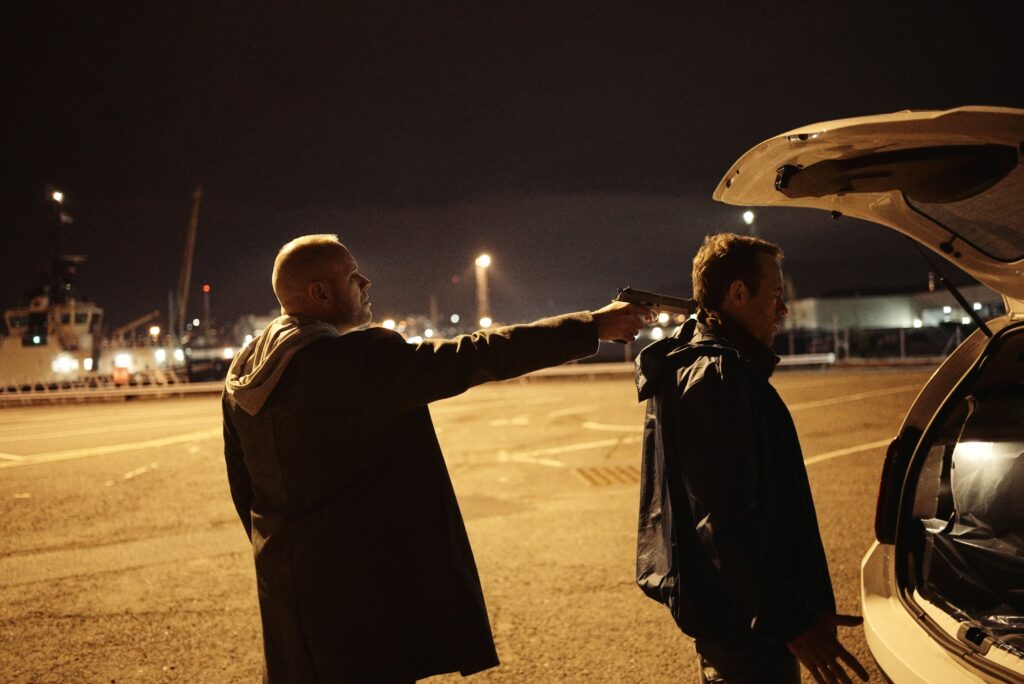May 22, 2022
by Carla Hay

“Take Me to the River: New Orleans”
Directed by Martin Shore
Culture Representation: The documentary “Take Me to the River: New Orleans” features a racially diverse (African Americans and white people) group of music artists and some producers talking about New Orleans music as they record the movie’s soundtrack songs.
Culture Clash: New Orleans has been a melting pot of different types of music, with certain genres (such as jazz and blues) originating directly from African American experiences of being enslaved and oppressed.
Culture Audience: “Take Me to the River: New Orleans” will appeal mostly to people who are interested in seeing New Orleans music and culture celebrated by music artists of many different generations.

“Take Me to the River: New Orleans” is partly a promotional vehicle showing the recording of the songs on the movie’s soundtrack and partly a history of New Orleans music culture. The documentary has got some editing issues, but the diverse performances in the studio are joyous to watch. Fans of jazz, blues, R&B, rap/hip-hop, Cajun and brass band music will find something to like in “Take Me to the River: New Orleans,” which has representation of all of these music genres.
Directed by Martin Shore and narrated by actor John Goodman, “Take Me to the River: New Orleans” is a sequel to Shore’s 2014 documentary “Take Me to the River,” which focused on the musical history and legacy of Memphis. “Take Me to the River: New Orleans” is not a fully comprehensive history of New Orleans music, because most of the history discussed is about the New Orleans music scene in the 20th century and the early 21st century. And the history is only covered in the context of which songs are on the soundtrack album to “Take Me to the River: New Orleans.” For example, before the recording of a Cajun song is performed, the movie does a brief history of Cajun music in New Orleans.
Filming of the documentary mostly took place at two New Orleans recording studios: Music Shed Studios and The Parlor Recording Studio. On the one hand, it gives viewers a very up-close and intimate view of the artists and their creative process when recording music in a studio. On the other hand, it makes the documentary look somewhat insular by putting so much focus on the recording studio sessions.
New Orleans has a vibrant live music scene that is barely covered in this documentary. There is some brief footage of outdoor performances by local street performers during parades, as well as very old archival clips of concerts by a few well-known New Orleans artists. That’s the extent to which live performances are covered in “Take Me to the River: New Orleans.”
The concept for the documentary and its soundtrack was to bring together artists of various generations to record classic songs that have New Orleans origins. Many of the artists in these recording sessions are New Orleans natives or people whose careers have been significantly influenced by New Orleans culture. And, not surprisingly, the documentary interviews have nothing but praise for New Orleans.
The artists who participated in these recording sessions included the Neville Brothers, Dr. John, Irma Thomas, Ledisi, G-Eazy, Snoop Dogg, William Bell, Galactic, Mannie Fresh, Preservation Hall Jazz Band, George Porter Jr., Christian Scott, Donald Harrison Jr., Big Freedia, Ani DiFranco, Maroon 5 keyboardist PJ Morton, Rebirth Brass Band, Dirty Dozen Brass Band, Soul Rebels, Voice of the Wetlands, 79rs Gang, The Givers, Dumpstaphunk, Cheeky Blakk, Lost Bayou Ramblers, Big Sam, Terence Higgins, Shannon Powell, Whirlin’ Herlin Riley, Alvin Ford Jr., Stanton Moore, 5th Ward Weebie, Walter Wolfman Washington, Eric Heigle, Dee-1, Erica Falls, Ivan Neville, Ian Neville and Davell Crawford. In addition, “Take Me to the River: New Orleans” has interviews with some artists who weren’t part of these recording sessions, including Jon Batiste, Mia X, DJ Soul Sister, Jazz Fest founding producer Quint Davis and Deacon John Moore.
The documentary features the recordings of these songs:
- “Wish Someone Would Care,” performed by Irma Thomas and Ledisi
- “Li’l Liza Jane,” performed by drummers Terence Higgins, Shannon Powell, Whirlin’ Herlin Riley, Alvin Ford Jr. and Stanton Moore
- “Firewater” performed by Donald Harrison Jr. and Christian Scott
- “Wrong Part of Town,” performed by 79rs Gang
- “Sand Castle Headhunter,” performed by the Dirty Dozen Brass Band
- “Blue Moon Special,” performed by Roots of Music, Ani DiFranco and Lost Bayou Ramblers
- “Stompin’ Ground,” performed by Aaron Neville
- “Hey Mama (Wild Tchoupitoulas)” performed by the Neville Brothers
- “504 (Enjoy Yourself),” performed by Soul Rebels and 5th Ward Weebie
- “Street Parade,” performed by Cyril Neville
- “New Orleans Girl,” performed by PJ Morton, Rebirth Brass Band and Cheeky Blakk
- “Act Like You Know,” performed by Dee-1, Mannie Fresh, Erica Falls and Big Freedia
- “Jack-A-Mo,” performed by Dr. John and Davell Crawford
- “Yes We Can Can,” performed by William Bell, Snoop Dogg and G-Eazy
“Take Me to the River: New Orleans” includes discussions of Mardis Gras Indian culture in New Orleans; the origins of “bounce” hip-hop in New Orleans; the influential legacy of New Orleans musician/producer Allen Toussaint; and the impact of 2005’s Hurricane Katrina on the New Orleans music scene. The words “family” and “community” come up a lot when people talk about the New Orleans music scene.
DJ Soul Sister, Big Freedia and Mia X are among the artists who say that many musicians permanently moved out of New Orleans after the devastation of Hurrican Katrina. Mia X comments on the New Orleans music scene after Hurricane Katrina, “We have this sense of family, unlike no other city, but it’s different.” As difficult as it was for many people to recover from Hurrican Katrina, the recovery process is testament to New Orleans’ resilience. In the documentary, rapper 5th Ward Weebie says, “If you ever seen people go through tough times, rough times, and still come at the end of the day smile about it, that’s what makes New Orleans unique.”
New Orleans native Morton says that he wrote “New Orleans Girl” after Hurricane Katrina changed the city. Morton says about the song “New Orleans is the girl. I’ve been all over the world, and there’s no place like New Orleans.” Snoop Dogg comments, “New Orleans is a safe haven of love.” Aaron Neville states, “New Orleans music is a way of life.”
A recurring theme in the documentary is the importance of passing down musical and cultural traditions or “passing the torch” to younger generations. Many of the New Orleans native musicians have the experience of growing up in musical families and with older musical mentors, perhaps more than musicians who grow up in many other cities. Powell says of learning from his elders: “I hung out with the old cats. I was taught not only how to play the drums but how to be a man.”
Riley, who’s been a drummer for Wynton Marsalis and George Benson, says in the documentary: “My family were my biggest influences My uncle and my grandfather [band leader Frank Lastie], they showed me how to play the drums. My grandfather showed me how to play [the drums] with butter knives … on the breakfast table … There’s a unique and distinct way we play the bass drums here. It really identifies the New Orleans sound.”
There’s a considerable segment on how African-oriented music intertwined with Native American culture in New Orleans, and this blend gave rise to Mardi Gras Indians, who have elaborate costumes and ritual dancing. The male leaders of these Mardi Gras Indian groups are called Big Chiefs, while the female leaders are called Big Queens. Many of these leaders have their own music groups.
The documentary features interviews with Big Chief Bo Dollis Jr. of the Wild Magnolias; his mother Big Queen Laurita Dollis; and 79rs Gang members Big Chief Romeo Bougere of the 9th Ward Hunters and Big Chief Jermaine Bossier of the 7th Ward Creole Hunters. Bougere and Bossier say that even though the 7th Ward and the 9th Ward are considered rival wards with a lot of feuding, these two musical collaborators decided to form the 79rs Gang to show that these two communities can be united through music.
Bougere comments, “We need to get past hating someone because they’re from another ward.” Bossier adds of Mardi Gras Indian culture, “This is a warrior culture. Things happen. But for the most part, it’s about being pretty. It’s about showing off your suit.”
One of the highlights of “Take Me to the River” is the collaboration between Thomas and Ledisi, who is ecstatic over being able to perform and record a song with one of her musical idols. Ledisi (who grew up in the New Orleans music scene, where her mother Nyra Dynese was in a band) practically swoons when Thomas greets her at the studio by giving Ledisi a gift of shrimp and okra. “Yes! She hooked me up, man!” Ledisi exclaims. And later Ledisi literally jumps up and down with joy after she and Thomas record their duet of “Wish Someone Would Care,” one of Thomas’ classics.
Thomas says of Ledisi and the legacy of New Orleans music culture: “As far as I’m concerned, she’s one of the few who will be passing it on … She seems to have a natural knack for it. And that’s a good thing. I feel very good about passing the torch to her.” Ledisi adds, “We don’t want to lose the story. We’ve got to honor our legends while they’re here.”
DiFranco comments, “The deepness and the intactness of the New Orleans community is being threatened. As a result, people here have to be more intentional about staying in touch with those roots, so the continuum is not broken.”
Preservation Hall Jazz Band member Ben Jaffe, whose parents Allan and Sandra Jaffe co-founded the legendary Preservation Hall music venue, says of continuing this legacy: “The most important thing that Preservation Hall can do is make music available to people. When we’re collaborating with musicians, we’re not looking for someone who has an affinity for New Orleans jazz or understands New Orleans jazz. We’re looking for people who share our soul.”
Another documentary highlight is the Neville Brothers’ recording of “Hey Mama (Wild Tchoupitoulas).” Not only was it the first time in years that brothers Aaron Neville, Cyril Neville, Art Neville and Charles Neville were in the same recording studio together, it would also turn out to be the last recording that all four brothers would make together. Charles Neville died in 2018, and Art Neville died in 2019.
Unfortunately, parts of “Take Me to the River: New Orleans” look very dated because of the deaths of some of the documentary’s on-camera participants. By the time “Take Me to the River: New Orleans” was released in theaters in 2022, several people in the documentary had already passed away. They include Charles Neville, Art Neville, Dr. John (who died in 2019) and 5th Ward Weebie (who died in 2020). However, it doesn’t take away from the great music shown in the documentary.
“Take Me to the River: New Orleans” has some flawed editing that doesn’t always make the transition between the topics very smooth. And except for a brief mention by a Neville family member that the Neville Brothers were ripped off by bad business deals at the height of their careers, the documentary glosses over any mention of corruption in the music industry and how it affected New Orleans artists. Ultimately, the best parts of the movie are in seeing the artists and their talent come alive when collaborating in the studio with other artists they admire and respect.
360 Distribution released “Take Me to the River: New Orleans” in select U.S. cinemas, beginning in New Orleans on April 22, 2022, and in New York City and Los Angeles on April 29, 2022.

